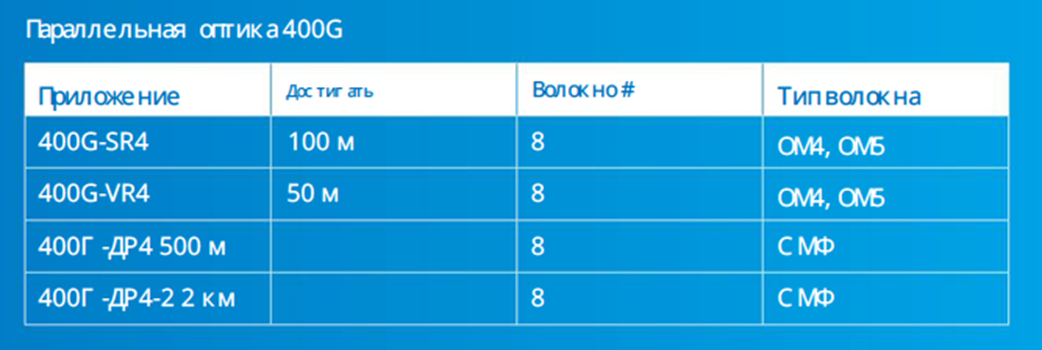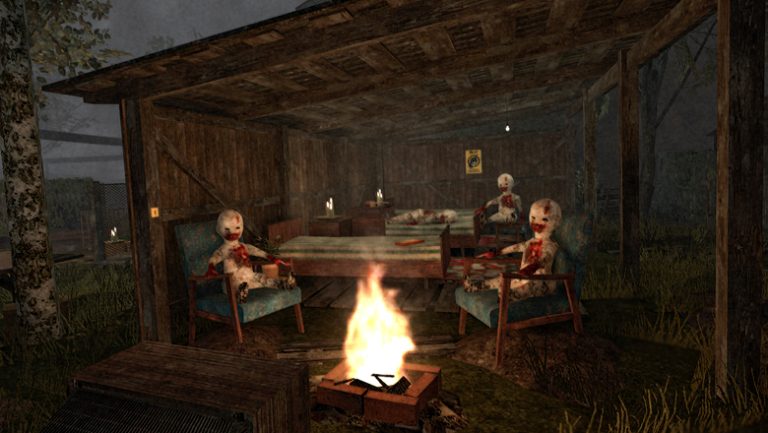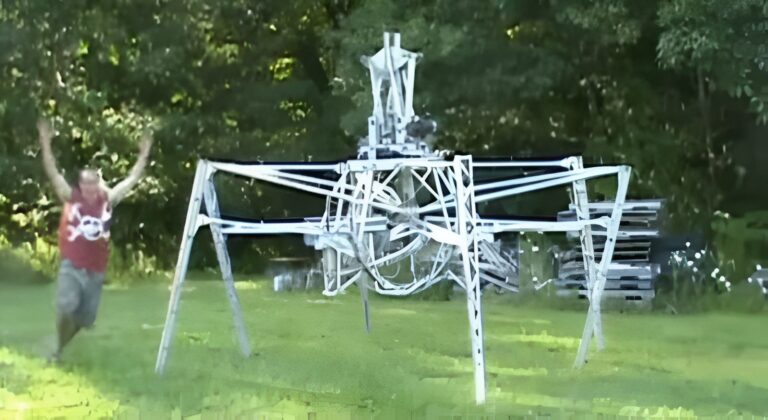SCS for data centers: trends 2024
In 2024, artificial intelligence continues to conquer the Internet space: generative and machine learning, artificial neural networks, deep learning, natural language processing and much more. As a result, data center managers and their teams are trying to figure out how to cope not only with the additional terabytes of new data flooding their networks, but also with demands for ultra-low latency, increased power consumption and exponentially more fiber counts.
Application requirements aren't the only thing that's growing. Data center areas are growing beyond national boundaries. Managing data sovereignty has become not only a political issue, but also a legal and security issue.
At the same time, data centers of all kinds – hyperscale, cloud providers, MTDCs and enterprises – are forming new relationships to take advantage of advantageous market positions, available resources and much-needed free space. As a result, the task of defining DCI backbone cables has become a full-time job in itself.
Times are changing, and the common denominator is that all these changes have a profound impact on your network infrastructure – from its cables, connections and components to its architecture, resiliency and adaptability.
How to prevent rapid obsolescence
A data center is a complex technical system. The part of the system responsible for processing and storing data, taking into account maximum efficiency in technical and economic terms, is built on the established model of interaction between OSI systems. Based on ISO/IEC 11801-5:2017, ANSI/TIA-942C and GOST R 59486-2021 standards, its physics is implemented as a structured cabling system.
When creating SCS, it is necessary to take into account current needs, and not allow structural, moral, and, especially, physical obsolescence over the entire service life – well, no less than 10 years.
If you build an SCS on a high-quality modern element base that has a reserve in throughput, then physical obsolescence will practically not manifest itself. Structural obsolescence can be prevented by design techniques, introducing the necessary redundancy of functionality, using cable path configurations that can be easily adapted in the light of new needs, etc.
Preventing obsolescence is much more difficult, since there are enough facts and initial conditions under which the risk of choosing the wrong technical solution for laying information lines in the computer room is very high. The best and, perhaps, the only option to reduce it is to follow modern industry trends in the development of SCS and data centers.
Length of internal lines
The cable system of a data center differs significantly from office systems in its geometric compactness. It is associated with the need to use air cooling to remove the large amount of heat generated by active network equipment and servers. The high power consumption of network equipment is due to its operation in overclocking mode to ensure maximum performance. It is worth noting that increasing the size of the turbine hall leads to a decrease in the efficiency of air cooling.
The area of a data center hall directly depends on the number of racks installed in it. A typical machine room has a rectangular shape with an aspect ratio of 1/3 and can accommodate 320 racks. To estimate the maximum length of a fixed line, a semi-perimeter can be taken. Based on the fact that the approximate area occupied by each rack is 2.6 m2, and adding 15%, say, to the central cross-connect, we get a maximum cable line length of 72 m.
This leads to a logical conclusion that the length of optical lines of office SCS of 300 m (according to standards) for the computer room of a data center will be excessive. It is quite possible to reduce it by 70-150 meters.
Reducing the maximum path length makes it possible to use a more economically advantageous element base for organizing a multimode structure when creating the information wiring of a turbine hall.
Parallel data transfer based on Base8 scheme
Data transmission paths in the computer room are built according to a parallel circuit. This is due to the physical capabilities of modern electronic technology. Since its performance is limited by a clock frequency of 30-50 GHz, this scheme is the only option to increase the speed of information flow.
Each message is divided into several blocks. Each is transmitted over its own subchannel and restored at the receiver. A linear signal is generated using pulse amplitude modulation or combined amplitude-phase pulse modulation. This makes it possible to simultaneously transmit up to 4 bits of data in one clock interval.
To increase the number of subchannels, SWDM technology can be used. Then, by organizing the linear channel part according to the Base8 scheme, we will obtain the following maximum transmission speed.

When implementing this scheme when building a data center SCS, a high-speed reserve is obtained that eliminates the risk of any obsolescence, certainly in 10 years. The industry has not even begun the transition to speeds of 800 Gbit/s, and it will be possible to talk about the real need for speeds greater than 1.8 Tbit/s, well, not earlier than 2030-2035.
OM5 fiber
Due to the fact that the computer rooms of data centers are geometrically compact and the length of fixed SCS lines is small (up to 30 meters), multimode technology can be used to create them, which is more economical than multimode. For this reason, it is advisable to use OM5 multimode cables for laying physical communication channels. This will look like a further modernization of equipment in the OM4 category. OM5 will increase technical efficiency by more than 30%.
CommScope highlights five reasons to choose OM5 fiber to ensure data centers meet today's demands for the very long term:
The OM5 fiber specification has already been published by the Telecommunications Industry Association as TIA-492AAAE, and is in the late stages of IEC voting, which will be published as IEC 60793-2-10 edition 6.
The OM5 and TIA-492AAAE specifications will be recognized in the upcoming ISO/IEC 11801 Edition 3 and the American National Standards Institute cable standard ANSI/TIA-568.3-D.
OM5 cables support all legacy applications at least as well as OM4 and are fully compatible with OM3 and OM4 cables.
OM5 is designed to support at least four low-cost wavelengths in the 850-950 nm range, providing optimal support for new shortwave wavelength division multiplexing (SWDM) applications that reduce the number of parallel fibers by at least four times, allowing you to continue using just two fibers (rather than eight) for 40 and 100 Gbps data transmission and reduce the number of fibers for higher speeds.
OM5 is available from CommScope worldwide in field and pre-completion versions for installation in a variety of enterprise environments, from campuses to buildings and data centers.

The best qualities of OM5 appear at speeds from 800 Gbit/s, when full spectrum multiplexing using SWDM technology is used. Nowadays such solutions are rarely used. But, taking into account the prospects for technology development and the minimum service life of a data center, OM5 category fiber should be installed in projects today. Especially at those facilities where the length of lines is increased. These include data centers with 150 or more racks
New types of optical connectors
When deciding which cable assemblies to use for backbone applications, current and possible future connector requirements should be considered. Over the past few years, VSFF connectors, very small form factor connectors that provide support for full-duplex or parallel applications, have begun to appear on the market. They provide better density and, in some cases, the ability to connect directly to the transceiver.

The goal is to connect more fibers to ensure full capacity utilization of network equipment. Typical fiber counts for high-speed connectors include 2, 8, or 16 fibers in both single-mode and multimode modes. These include the outdated LC duplex and more recent types of connectors: SN, MDC and CS.

The new connectors will allow you to pack even more manageable fibers into a smaller footprint. VSFF connectors accommodate 16 or 24 fibers in the same space as SN and MDC.
In addition, VSFF fiber optic connectors make it easier to pull smaller, lighter, pre-terminated fiber counts through conduit. When deployed using low profile coiled ribbon cable, pre-terminated high fiber count VSFF connectors simplify and speed installation, saving valuable time and space;
Being assembled under carefully controlled factory conditions, it also provides an additional guarantee of performance. As a result, rolled ribbon cable pre-terminated with new VSFF connectors provides some unique advantages over field terminated or spliced alternatives.
Back in 2020, CommScope and US Conec entered into a licensing agreement that allows both parties to produce VSFF (Very Small Form Factor) fiber optic connectors, including the MDC connector and others. PDF version. Provides three times the density advantage over LC connectors. HICKORY.

Initial applications of VSFF connectors are focused on pre-terminated high fiber count backbone cables intended to be routed through indoor ducts or duct systems. Future VSFF applications may include equipment interfaces, patch panels, or structured cabling.
Propel platform as a universal solution for different types of connectors
CommScope's Propel solution is a new end-to-end, high-speed, modular fiber optic platform for data centers. Propel's solution is the first global fiber platform to deliver native 16-fiber technology and support 8-, 12-, and 24-fiber applications. In addition, it supports VSFF connectors in its distribution modules.
With its modular platform design, Propel offers all the benefits of using VSFF connectors today while eliminating the risks by preventing vendor lock-in on the connector front panel. The Propel concept allows multiple connectors, including VSFF connectors, to be integrated into one platform. This enables future-proof and flexible cable design.
The Propel platform is also designed to be a greener and more sustainable solution.
Data Center Links 400G, 800G and 1.6T
The first indicator of an organization's success is its ability to adapt to changes in the environment. Call it survivability. If you can't move to the new status quo, your customers will leave you behind. To meet market demands, CommScope offers both fiber optic equipment and the latest data center cabling principles.
For cloud data centers, the ability to adapt and survive is tested every year as increasing demands for throughput, capacity and lower latency drive the shift to faster network speeds. Over the past few years, we have seen network speeds across all data centers increase from 25G/100G to 100G/400G.
Cloud and hyperscale data centers are now deploying links with 800G transceivers, and the industry is looking to standardize both 800G and 1.6T transceivers. One of the leading developers and manufacturers of modern and unparalleled optical network equipment is CommScope. The key point is which optical technology is better.
Types of optical transceivers
Optical transceivers can be grouped by supported range and fiber type. SR optics typically support distances of up to 100 m over parallel multimode fiber. DR optics use parallel single-mode fiber up to 500 m or 2 km long. And FR and LR optics use duplex single-mode fiber and wavelength division multiplexing (WDM) up to 2 km and 10 km, respectively. These types of optical fibers are consistently used for 400G, 800G and 1.6T transceivers.
400G optical transceivers
The 400G optical market is driven by cost and performance, and transceivers using 4x100G links replace earlier versions that used 8x50G links. 4x100G switches and transceivers offer lower cost and power consumption compared to 8x50G transceivers.

800G optical transceivers
The first generation of 800G transceivers will use 8x100G channels and parallel fiber. These transceivers will be based on 400G transceiver technology and will be included in the IEEE 802.3df standard, which is scheduled to be published this year. The draft IEEE 802.3dj standard, scheduled to be published in 2026, will address optics operating on 4x200G links.

Optical transceivers 1.6T
Terabit BiDi MSA has already developed 1.6T transceivers that use multi-wavelength VCSEL lasers and multi-mode optical fiber.

Early 1.6T single mode optics will be 1.6T-DR8 and 1.6T-DR8-2. Both will use 16 parallel single-mode fibers (or eight pairs of fibers) and support communication ranges of 500m and 2km, respectively. This optic will use the same 200G lines as 800G, but the number of lines will increase to eight. Like the 800G-DR8, these 1.6T transceivers will likely be available with MPO16 and 2xMPO8 connector interfaces.
Multimode transceivers consume 1-2 Vt less energy than single-mode transceivers.
This results in energy savings of 2-4 W per channel.
Over time, transceiver technology will migrate over increasingly shorter distances. As line speeds increase, we are seeing multimode fiber replacing copper cables for in-line applications. An obvious example is the use of multimode fiber in artificial intelligence (AI) clusters. We expect multimode fiber to remain a key part of data center networks for many generations to come.
Construction of data centers in Russia
Modern foreign economic and political realities have led to the acceleration of internal Russian processes for digital technological breakthrough. It is impossible without large domestic data processing and storage centers. The emergence of a large number of cloud services and services, the widespread and steady introduction of artificial intelligence into all spheres of life, and much more, require digital networks to have high speeds and work with large volumes of information.
Rosenergoatom announced the launch of 2 new data centers in 2024 – in Moscow and Innopolis, as well as the possibility of early booking of services of these centers.
The Moscow-2 data center (36 MW for 3,640 Tier IV UI rack spaces) is located in the south of Moscow. Its area exceeds 20 thousand m2.
The Innopolis data center (16 MW for 2,000 Tier III UI rack spaces) is located in the Volga Federal District. Technological solutions for the Innopolis data center were developed taking into account the import substitution strategy.
Both data centers will be launched in the first quarter of 2024.
Also, the largest data center will be opened in the Balakovo district of the Saratov region. It is being created to organize a sovereign infrastructure for storing and processing data within Russia. It is planned to deploy the GosTech digital platform at the center's facilities.
The total area of the turbine halls is 10 thousand m2; technological modules – more than 62 thousand m2. In the data center they want to place from 3,000 racks with computing equipment, with 120,000 servers.
The facility is planned to be fully operational by 2030, and the first phase will be launched this year.
In conclusion
The avalanche-like growth of data centers in Russia requires the rapid implementation of scalable and high-performance solutions that meet international standards and follow innovative trends. Among large and reliable global manufacturers, such as CommScope, it is worth choosing those who offer ready-made solutions for turnkey data center structured cabling systems.
It is important to be proactive and implement global innovative technologies to ensure the flexibility and adaptability of data center infrastructure to changing market requirements. This approach allows Russian companies to quickly respond to changes in competitive conditions and provide their customers with high-quality service.





